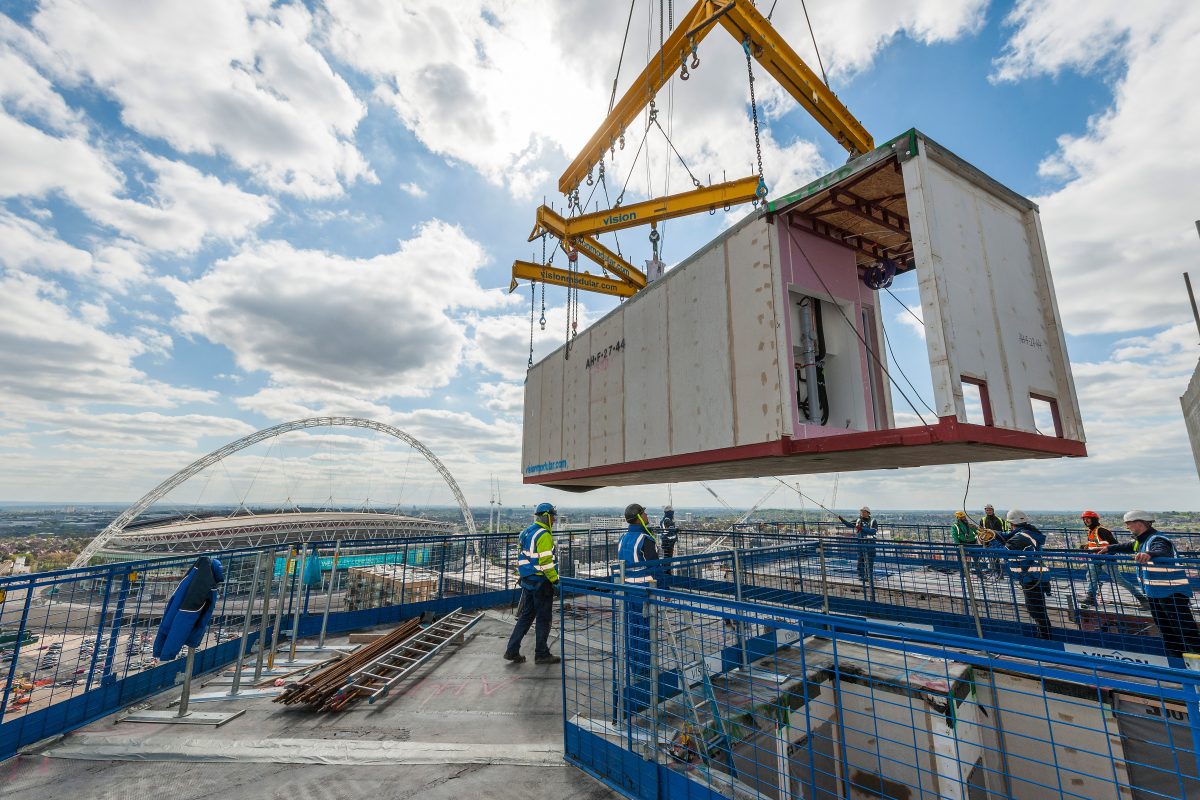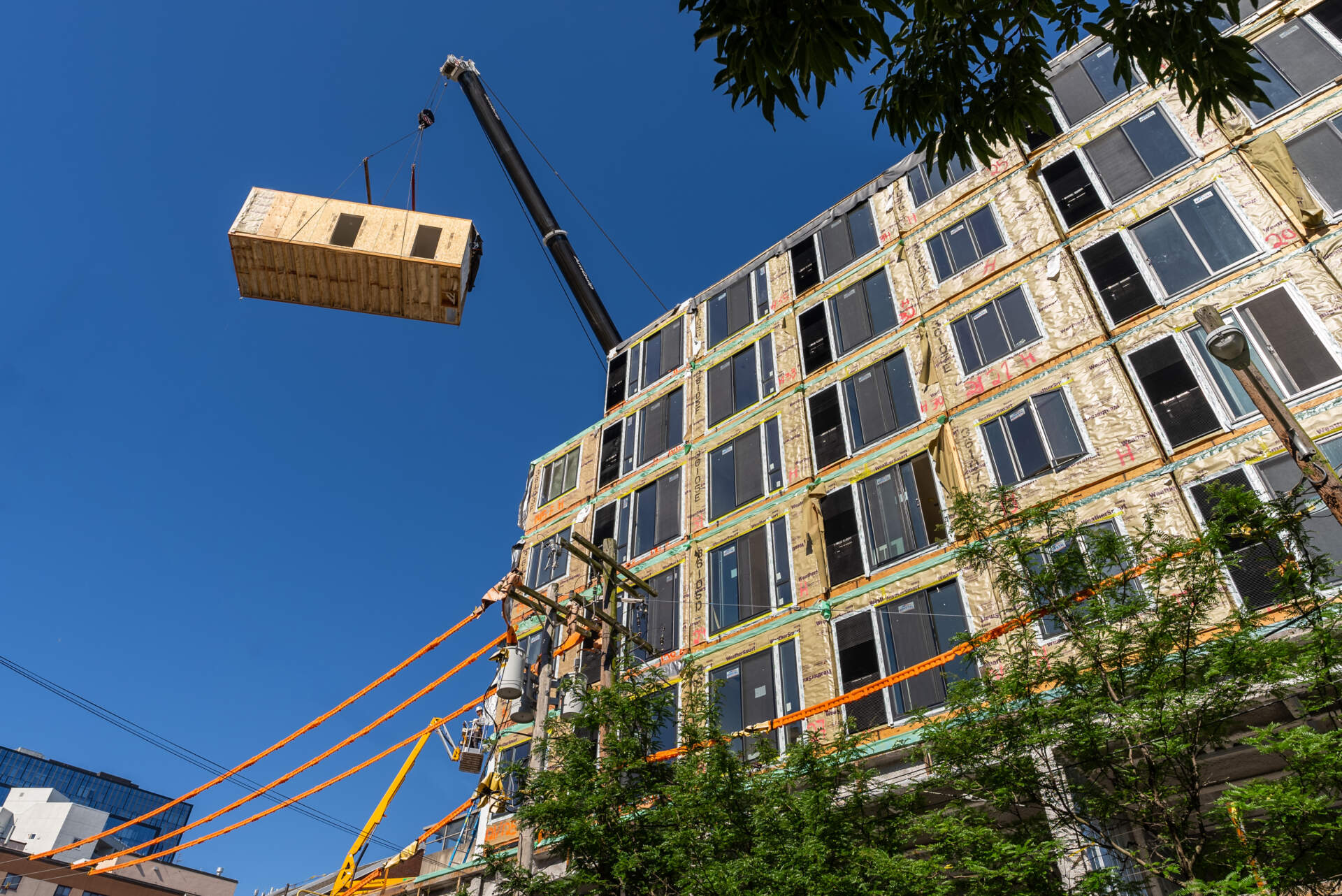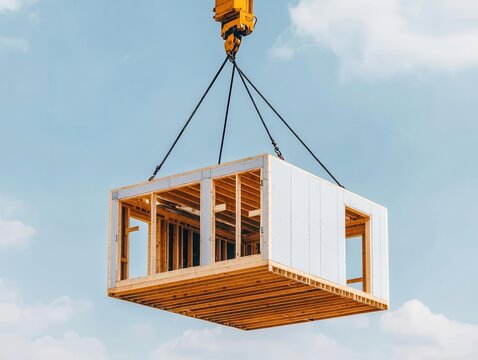18.02.2025
Modular Construction: The Future of the Building Industry?
Modular construction is revolutionizing the building industry, offering faster, more cost-effective, and sustainable alternatives to traditional construction methods. As urbanization accelerates and the demand for efficient building solutions increases, modular construction is gaining traction across various sectors, including residential, commercial, and industrial development. But is modular construction truly the future of the building industry?
What is Modular Construction?
Modular construction involves prefabricating building sections, or modules, in a controlled factory environment before assembling them on-site. These modules are constructed with the same materials and standards as traditionally built structures but offer greater efficiency and consistency.

Advantages of Modular Construction
1. Speed and Efficiency
Modular buildings can be completed 30% to 50% faster than traditional construction.
Example: The 57-story Mini Sky City in China was built in just 19 days using modular techniques.

2. Cost Savings
Factory-controlled production reduces material waste by up to 90%.
Lower labor costs as off-site fabrication reduces on-site workforce requirements.
3. Sustainability and Reduced Environmental Impact
Modular buildings produce significantly less construction waste.
Energy-efficient designs contribute to reduced operational costs.
Example: The Bullitt Center in Seattle, a modular commercial building, is recognized as one of the greenest buildings in the world.

4. Improved Quality Control
Factory conditions ensure precision and quality consistency.
Advanced technology such as 3D printing and automation enhances accuracy.
5. Flexibility and Scalability
Modular units can be easily expanded, relocated, or repurposed.
Example: In disaster relief efforts, prefabricated modular units provide rapid emergency housing.
Challenges in Modular Construction
1. Higher Initial Investment
Factory setup and transportation logistics require significant upfront capital.
2. Design and Customization Limitations
Modular buildings may lack the intricate architectural details achievable in traditional construction.
3. Transportation and Logistics
Large prefabricated modules require specialized transportation, adding to costs and logistical challenges.
4. Regulatory and Zoning Barriers
Varying building codes and zoning laws can complicate modular construction approvals.
Solution: Standardized regulations for modular buildings can streamline implementation.

Modular Construction in Different Sectors
1. Residential Housing
Affordable housing solutions through modular developments.
Example: Boxabl, a startup producing foldable, prefabricated homes, aims to revolutionize low-cost housing.
2. Commercial Buildings
Hotels, offices, and retail spaces benefit from modular efficiency.
Example: Marriott International has incorporated modular construction in multiple hotel projects.
3. Healthcare Facilities
Rapid construction of hospitals and clinics.
Example: Wuhan’s 1,000-bed modular hospital built in just 10 days during the COVID-19 pandemic.
4. Education and Infrastructure
Schools and universities use modular solutions for expansion.
Example: The UK government has invested in modular schools to address overcrowding.

The Future of Modular Construction
1. Integration with Smart Technology
AI and IoT-enhanced modular buildings for energy efficiency and automation.
2. Advancements in 3D Printing and Robotics
Faster and more precise modular unit production.
3. Increased Government and Private Sector Adoption
Governments investing in modular housing to combat housing shortages.
Example: Sweden leads in modular residential construction, with over 80% of homes built using prefabrication.
4. Greater Focus on Sustainable Materials
Use of recycled and bio-based materials to enhance environmental benefits.
Modular construction is not just a trend; it is shaping the future of the building industry. With its speed, cost-effectiveness, and sustainability advantages, it offers a viable solution to the growing demands of urban development. While challenges remain, advancements in technology and increasing industry adoption indicate that modular construction is set to become a dominant force in the years ahead.
Partnering with Plandi.io for Modular Excellence
As modular construction evolves, having the right tools and collaborators is crucial. Plandi.io offers a versatile platform where professionals can access precise BIM models, connect with industry experts, and source high-quality materials tailored to modular projects. Whether designing a modular hospital or a custom prefab home, Plandi.io bridges the gap between vision and execution, ensuring every project achieves excellence.
The article was useful to you?
4
7
0